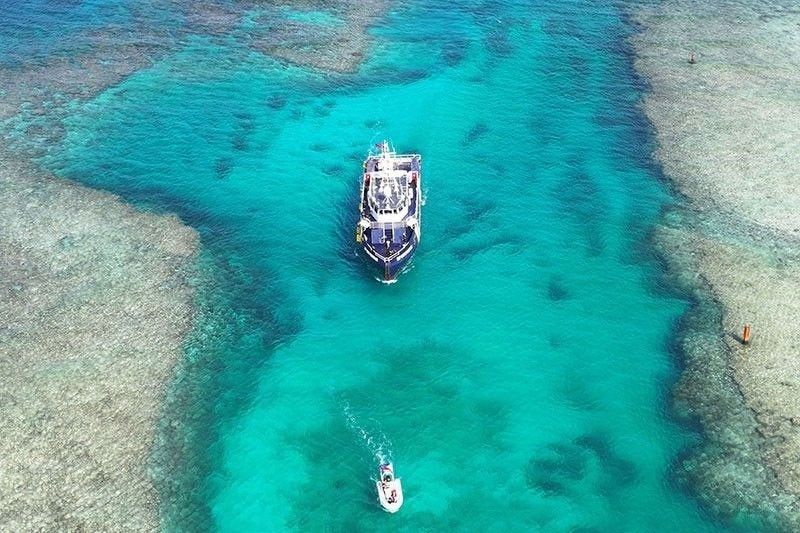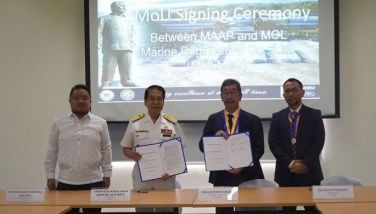China protests new Philippine law that could start ASEAN maritime border talks

MANILA, Philippines — A landmark Philippine maritime law that drew instant protest from Beijing could help Manila settle long-standing territorial disputes with its Southeast Asian neighbors in the South China Sea.
The Maritime Zones Act, signed by President Ferdinand Marcos Jr. on Friday, November 8, define the Philippines' maritime boundaries under international law. It was signed alongside the Archipelagic Sea Lanes Act, which establishes routes for foreign vessels through Philippine waters.
The laws arm Manila with new legal muscle in one of the world's most contested waterways, where China has increasingly chased away and attacked vessels from the Philippines and other co-claimant states.
Beijing swiftly condemned the new laws and summoned the Philippine ambassador to China "to make serious protests" shortly after the Philippines passed the laws.
"China strongly condemns and firmly rejects this as the move gravely infringes upon China's territorial sovereignty and maritime rights and interests in the South China Sea," China's foreign ministry said in a statement late Friday.
Sen. Francis Tolentino, the laws' principal author, has tempered expectations about their immediate impact on tensions with China.
Diplomatic opening
But beyond deterring China, maritime expert Julio Amador III believes the new laws can set the legal framework needed for the Philippines to start maritime boundary talks with Malaysia and Vietnam.
"What it will lead to is an opening for diplomatic negotiations as the Philippines now has legal basis to negotiate maritime boundaries and find acceptable compromises," Amador told Philstar.com.
The Maritime Zones Act maps out exactly where the Philippines can exercise sovereignty and control. It defines the country's internal waters, archipelagic waters, territorial sea, and exclusive economic zone, as enshrined in the 1982 United Nations Convention on the Law of the Sea (UNCLOS).
Amador sees the potential for the new law to help the Philippines replicate its landmark 2014 maritime boundary deal with Indonesia.
In 2014, Manila and Jakarta settled a 20-year border dispute by agreeing on the limits of their overlapping exclusive economic zones in the Mindanao and Celebes Seas.
That landmark deal — the Philippines' first maritime boundary treaty — took nearly two decades to complete. First proposed in 1994, it was signed in 2014 and entered into force in 2019. Marcos has called it a "template" for delimitation talks among other Southeast Asian nations.
Meanwhile, the Philippines shares overlapping claims with Vietnam and Malaysia in several parts of the South China Sea. With Vietnam, both countries claim parts of the Spratly Islands, particularly in the North Danger Reef area. The Philippines occupies Northeast Cay (Parola Island) while Vietnam holds Southwest Cay (Lagos Island) — features that sit just 1.75 nautical miles apart.
With Malaysia, overlapping claims centers in Sabah and parts of the Spratlys. The two countries have competing claims over several features including Commodore Reef (Rizal Reef to the Philippines, Terumbu Laksamana to Malaysia) and parts of the continental shelf in the South China Sea.
"With the [Maritime Zones Act], we can now find acceptable median boundaries with Malaysia and Vietnam," Amador said.
China's fury
The two new maritime laws come eight years after an international tribunal invalidated Beijing's sweeping claims over the South China Sea — a ruling China still rejects. Beijing claims nearly 90% of the strategic waterway, through which more than $3 trillion in annual trade passes.
China, through its foreign ministry spokesperson, specifically objected to the Philippines' new laws for "illegally [including] most of China’s Huangyan Island and Nansha Islands and related maritime areas in the Philippines’ maritime zones." It used the Chinese names for Scarborough Shoal and the Spratly Islands.
"China will firmly respond to any infringement or provocative actions," Beijing's foreign ministry warned, calling the new laws a violation of the Declaration on the Conduct of Parties in the South China Sea.
The geopolitical analyst maintained that it is within the Philippines' sovereign right to legislate its maritime boundaries.
"The Philippines is merely exercising its right to delineate its maritime zones as provided for by international law," Amador said. "China has passed similar laws without any legal basis while the Philippines used UNCLOS and the 2016 arbitration as foundation."
Protection of 'maritime future'
The landmark legislation drew strong support from Philippine maritime experts and officials, who called them crucial for protecting the country's waters and economic interests as China continues to ignore the 2016 ruling.
Jay Batongbacal, executive director of the University of the Philippines Institute of Maritime Affairs and Law of the Sea, rejected China's protests. He said the laws create "a fair, equitable, and legal allocation of authority over the seas" rather than "unilateral and oppressive impositions by the powerful over the weak."
For the municipality of Kalayaan in the disputed Spratly Islands, the laws strengthen protection for Filipino communities. "This provides stronger protection and support for our people living in Pag-asa Island," local officials said in a statement, referring to the Philippines' largest occupied feature in the Spratlys.
The Philippine Maritime Council called the laws "essential guidelines" that would finally clarify the scope of Philippine maritime jurisdiction and protect the country's marine resources.
"These represent more than just new legislation," the council said. "They are a pledge to our maritime future."
- Latest
- Trending



























